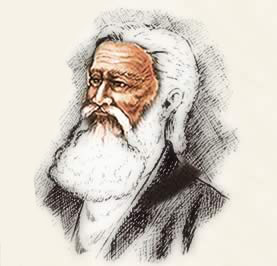The Diwan of Rahman BabaClick Here to View The FullDiwan In Original Pashto Language Afghan poetry is essentially an oral art. Popular lines are passed on without the need of pen and ink, and only later (if the poet becomes famous) are they collected into books. It is no surprise then to find that the collection of one particular poet’s work is a complicated exercise - similar perhaps to trying to reweave a carpet from threads that have long since been untied. It is held by Pukhtuns that Rahman himself never put pen to paper, but would write with his finger in the silt washed up by the river Bara. His friends, it is said, later collected his poems from what they remembered of his scribblings. Though no original diwan has ever come to light, it seems likely that a diwan existed in Rahman's lifetime, as he himself hints: “The whole of Rahman's diwan can be sacrifice for this ghazal, That tells of the conduct of the deruishes," and "I Rahman am thankful fro my verses: To have discovered such a diwan." Early versions of the diwan were copied by hand, and apparently were in wide circulation as early as 1728. Over 25 original manuscripts of the diwan are scattered in various libraries and private collections world wide. Though the majority of these manuscripts are undated, they include several that may have been written within 50 years of Rahman's death. In some versions the diwan is divided into two separate daftars (volumes). In each, the poems are arranged according to the rhyming letter that ends each line. There is considerable variation between different manuscripts with regard to orthography and spelling, and many differences in content. Perhaps the most useful compilation that traces these differences is the kuliat(antholog$ compiled by kamil. The first printed diwan was produced in Lahore in 1877, an edition that was based on the collection of Rahman’s poems made by Maulvi Ahmad under the supervision of the Anglican Missionary T. P. Hughes. At least three other attempts have been made to piece together the definitive diwan from different manuscripts. |
 The diwan chosen as the basis for this translation was Rasa’s edition, which is itself based on Hughes’ compilation. This choice was made because this version, though not the most accurate, is still the best known and most influential. The ahin contains 343 poems. Of these, the majority are in the form of ghazals between 8 and 12 lines in length. Six poems are between 40 and 50 lines long, and D 46 is the longest, with 93 lines. All but one of the ghazals are in Pushtu. There is considerable variation in style between the different poems, with the most common style following the conventions perfected by Hafiz and other Persian poets. The lines of each poem have two parts (misra) with a fixed rhyming scheme. Some ghazals in the diwan have a radeefic scheme, in whch there is a repetition of the same word at the end of each line and in both misra of the first line. Many ghazals also have an embedded kafia rhyme, in which the third last word in each line also rhymes.” There are also frequent alliterations within each line that emphasize the rolling rhythm of the poetry. The result of these interior rhymes is that, when read aloud, Rahman’s poems have a resonant quality, which in places even approaches the “orgy of sound”’* experienced when readmg Rumi. Other styles of ghazal are also present in the diwan, including many with only kafia but no radeef. The last two poems in the diwan are in the style of muhamas, in which each grouping has five rhyming couplets. Throughout the diean the last line of each ghazal contains the takhallus (the poet’s name), following the style first used by Sanai. |
